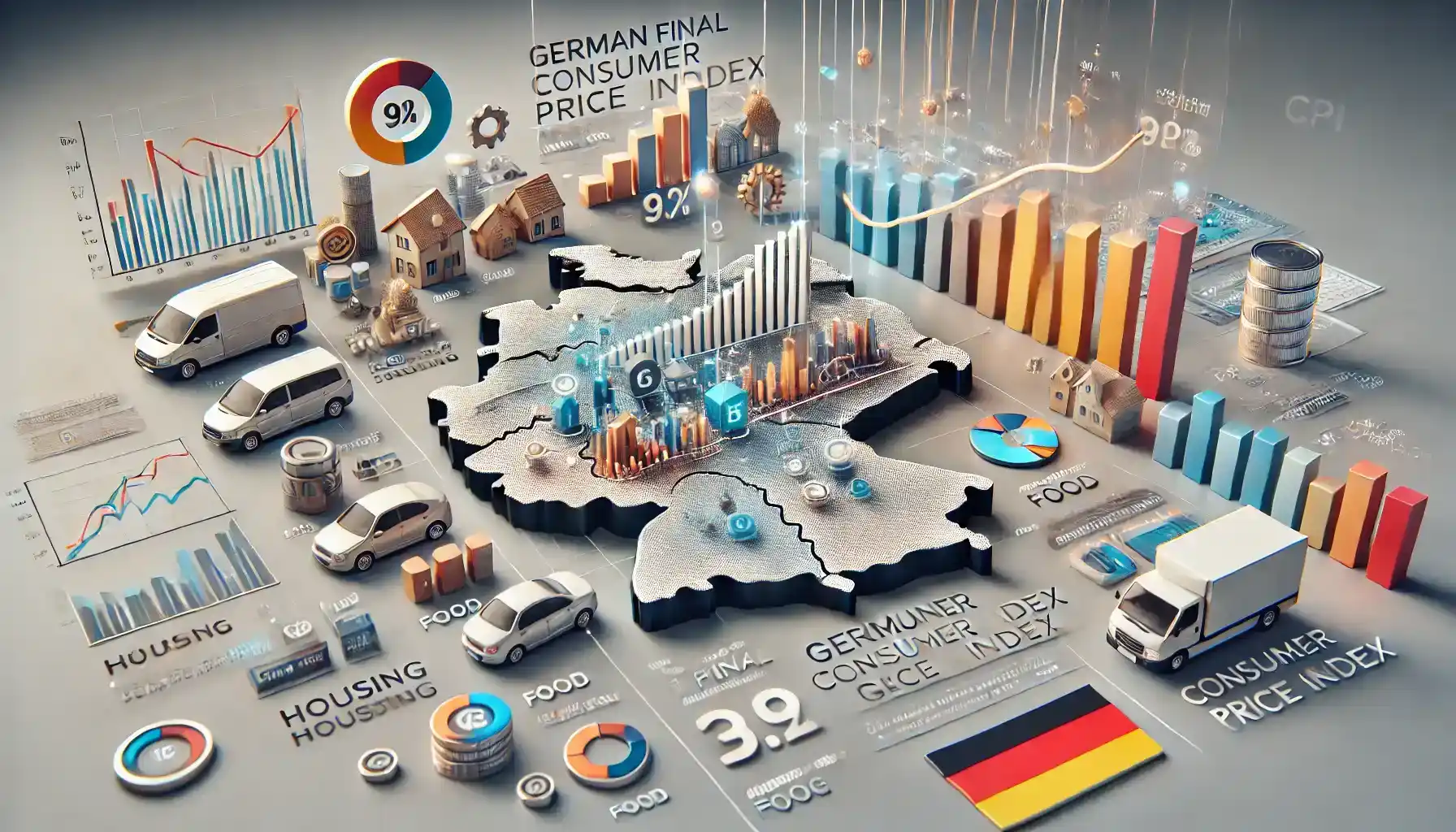The German Consumer Price Index (CPI) is a crucial economic indicator that forex traders closely monitor. Understanding its nuances can give traders an edge in predicting market movements and making informed decisions. This article delves deep into the German Final CPI, its implications for forex trading, and strategies to leverage this information effectively.

Understanding the German Final CPI
What is the German Final CPI?
The German Final CPI measures the average change in prices paid by consumers for a basket of goods and services over time. It reflects inflation levels and is a key indicator of economic health. High CPI indicates rising prices, which can lead to tighter monetary policies, while low CPI suggests lower inflation and potentially looser monetary policies.
How is the German Final CPI Calculated?
The CPI is calculated by comparing the current prices of a selected basket of goods and services to prices in a base year. This basket includes items like food, clothing, housing, transportation, and healthcare. The Federal Statistical Office of Germany compiles this data monthly, providing insights into consumer spending patterns and inflation trends.
The Importance of German Final CPI in Forex Trading
Impact on Currency Value
The German Final CPI significantly impacts the value of the Euro (EUR). High CPI often leads to expectations of interest rate hikes by the European Central Bank (ECB), boosting the Euro’s value. Conversely, a low CPI can signal potential rate cuts, weakening the Euro. Forex traders need to keep an eye on CPI data to anticipate these changes and adjust their trading strategies accordingly.
Influence on Market Sentiment
CPI data also influences market sentiment. Positive CPI data can boost confidence in the economy, leading to increased investment and a stronger currency. Negative data, on the other hand, can create uncertainty and lead to currency depreciation. Traders must gauge market sentiment alongside CPI figures to make well-rounded trading decisions.
Analyzing Historical CPI Trends
Long-term Trends and Their Implications
Examining historical CPI trends can provide valuable insights. For instance, consistent increases in CPI may indicate a long-term inflation trend, prompting the ECB to consider tightening monetary policy. Traders can use this information to predict future market conditions and adjust their positions accordingly.
Short-term Volatility and Trading Opportunities
Short-term fluctuations in CPI can create trading opportunities. A sudden spike in CPI, for example, can lead to immediate market reactions, presenting short-term trading opportunities. Understanding these short-term movements and their causes is crucial for forex traders looking to capitalize on market volatility.
Strategies for Trading Based on German Final CPI

Fundamental Analysis
Using fundamental analysis, traders can evaluate the potential impact of CPI data on the Euro. This involves analyzing the broader economic context, such as employment rates, GDP growth, and other inflation indicators, to make informed trading decisions. Fundamental analysis helps traders understand the underlying economic forces driving currency movements.
Technical Analysis
Technical analysis involves studying price charts and patterns to predict future market movements. Traders can use indicators like moving averages, RSI, and MACD to identify trends and potential entry and exit points. Combining technical analysis with CPI data can enhance trading strategies and improve accuracy.
Common Mistakes to Avoid
Overreacting to Initial Data Releases
One common mistake is overreacting to initial CPI data releases without considering the broader economic context. It’s essential to wait for the final CPI data, which provides a more accurate picture of inflation trends. Jumping to conclusions based on preliminary data can lead to poor trading decisions.
Ignoring Other Economic Indicators

Focusing solely on CPI data while ignoring other economic indicators can be detrimental. Factors like employment rates, industrial production, and consumer confidence also impact currency values. A holistic approach that considers all relevant data is crucial for successful forex trading.
The Role of the European Central Bank (ECB)
Monetary Policy Decisions
The ECB’s monetary policy decisions are heavily influenced by CPI data. Understanding how the ECB interprets CPI trends can provide insights into potential interest rate changes and other policy actions. Traders can anticipate these changes and adjust their strategies to stay ahead of the market.
Communications and Market Expectations
The ECB’s communications, including press conferences and policy statements, provide valuable clues about future policy actions. Traders should pay close attention to these communications and how they align with CPI data to gauge market expectations and adjust their positions accordingly.
Case Studies: CPI and Forex Market Reactions
Case Study 1: High CPI and Euro Appreciation
In a scenario where CPI data shows a significant increase, the Euro often appreciates due to expectations of tighter monetary policy. Traders who anticipated this trend and positioned themselves accordingly would have profited from the Euro’s strength.
Case Study 2: Low CPI and Euro Depreciation
Conversely, when CPI data indicates a decrease, the Euro tends to depreciate. Traders who recognized this trend could have taken short positions on the Euro, benefiting from its decline. Analyzing past CPI data and market reactions can provide valuable lessons for future trading.
Practical Tips for Forex Traders
Stay Updated with Economic Calendars

Regularly checking economic calendars helps traders stay informed about upcoming CPI releases and other key economic indicators. Being aware of these dates allows traders to prepare for potential market volatility and adjust their strategies in advance.
Use Stop-Loss Orders
Using stop-loss orders can protect traders from significant losses during unexpected market movements. Setting stop-loss orders at strategic levels ensures that traders can exit positions quickly if the market moves against them, minimizing potential losses.
Conclusion
The German Final CPI is a vital indicator for forex traders, offering insights into inflation trends and potential monetary policy actions. By understanding its implications and using a combination of fundamental and technical analysis, traders can make informed decisions and capitalize on market movements. Staying updated with economic data, avoiding common mistakes, and learning from past market reactions are crucial for success in forex trading. Remember, in the world of forex, knowledge is power, and understanding the German Final CPI can give you the edge you need.
FAQs
1. How often is the German Final CPI released?
The German Final CPI is released monthly by the Federal Statistical Office of Germany.
2. What is the difference between preliminary and final CPI data?
Preliminary CPI data provides an initial estimate, while final CPI data offers a more accurate and comprehensive picture of inflation trends.
3. How does high CPI affect the Euro?
High CPI usually leads to expectations of interest rate hikes by the ECB, which can boost the Euro’s value.
4. Can CPI data predict future economic conditions?
While CPI data provides valuable insights into inflation trends, it should be considered alongside other economic indicators for a comprehensive analysis.
5. What are some effective strategies for trading based on CPI data?
Effective strategies include using fundamental and technical analysis, staying updated with economic calendars, and using stop-loss orders to manage risk.
